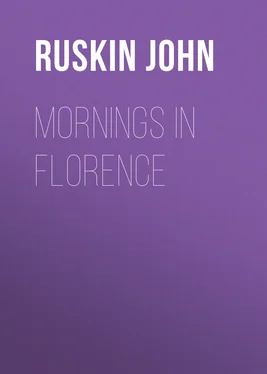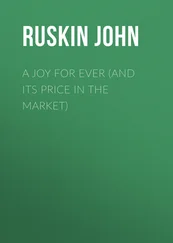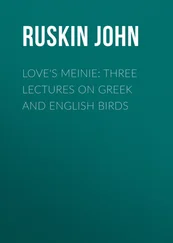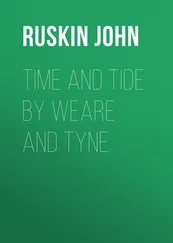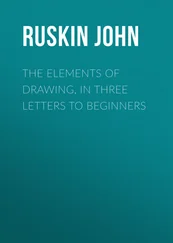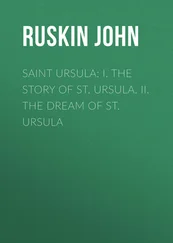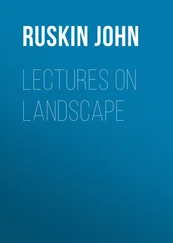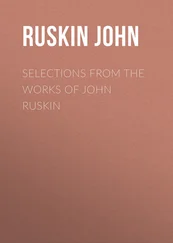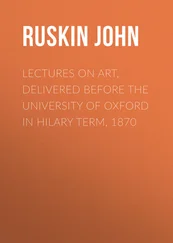John Ruskin - Mornings in Florence
Здесь есть возможность читать онлайн «John Ruskin - Mornings in Florence» — ознакомительный отрывок электронной книги совершенно бесплатно, а после прочтения отрывка купить полную версию. В некоторых случаях можно слушать аудио, скачать через торрент в формате fb2 и присутствует краткое содержание. Жанр: foreign_antique, foreign_home, literature_19, visual_arts, на английском языке. Описание произведения, (предисловие) а так же отзывы посетителей доступны на портале библиотеки ЛибКат.
- Название:Mornings in Florence
- Автор:
- Жанр:
- Год:неизвестен
- ISBN:нет данных
- Рейтинг книги:4 / 5. Голосов: 1
-
Избранное:Добавить в избранное
- Отзывы:
-
Ваша оценка:
- 80
- 1
- 2
- 3
- 4
- 5
Mornings in Florence: краткое содержание, описание и аннотация
Предлагаем к чтению аннотацию, описание, краткое содержание или предисловие (зависит от того, что написал сам автор книги «Mornings in Florence»). Если вы не нашли необходимую информацию о книге — напишите в комментариях, мы постараемся отыскать её.
Mornings in Florence — читать онлайн ознакомительный отрывок
Ниже представлен текст книги, разбитый по страницам. Система сохранения места последней прочитанной страницы, позволяет с удобством читать онлайн бесплатно книгу «Mornings in Florence», без необходимости каждый раз заново искать на чём Вы остановились. Поставьте закладку, и сможете в любой момент перейти на страницу, на которой закончили чтение.
Интервал:
Закладка:
He evidently never checked the boy, from the first day he found him. Showed him all he knew: talked with him of many things he felt himself unable to paint: made him a workman and a gentleman,—above all, a Christian,—yet left him—a shepherd. And Heaven had made him such a painter, that, at his height, the words of his epitaph are in nowise overwrought: "Ille ego sum, per quem pictura extincta revixit."
A word or two, now, about the repainting by which this pictura extincta has been revived to meet existing taste. The sky is entirely daubed over with fresh blue; yet it leaves with unusual care the original outline of the descending angel, and of the white clouds about his body. This idea of the angel laying his hands on the two heads—(as a bishop at Confirmation does, in a hurry; and I've seen one sweep four together, like Arnold de Winkelied),—partly in blessing, partly as a symbol of their being brought together to the same place by God,—was afterwards repeated again and again: there is one beautiful little echo of it among the old pictures in the schools of Oxford. This is the first occurrence of it that I know in pure Italian painting; but the idea is Etruscan-Greek, and is used by the Etruscan sculptors of the door of the Baptistery of Pisa, of the evil angel, who "lays the heads together" of two very different persons from these—Herodias and her daughter.
Joachim, and the shepherd with the larkspur cap, are both quite safe; the other shepherd a little reinforced; the black bunches of grass, hanging about are retouches. They were once bunches of plants drawn with perfect delicacy and care; you may see one left, faint, with heart-shaped leaves, on the highest ridge of rock above the shepherds. The whole landscape is, however, quite undecipherably changed and spoiled.
You will be apt to think at first, that if anything has been restored, surely the ugly shepherd's uglier feet have. No, not at all. Restored feet are always drawn with entirely orthodox and academical toes, like the Apollo Belvidere's. You would have admired them very much. These are Giotto's own doing, every bit; and a precious business he has had of it, trying again and again—in vain. Even hands were difficult enough to him, at this time; but feet, and bare legs! Well, he'll have a try, he thinks, and gets really a fair line at last, when you are close to it; but, laying the light on the ground afterwards, he dare not touch this precious and dear-bought outline. Stops all round it, a quarter of an inch off, 5 5 Perhaps it is only the restorer's white on the ground that stops; but I think a restorer would never have been so wise, but have gone right up to the outline, and spoiled all.
with such effect as you see. But if you want to know what sort of legs and feet he can draw, look at our lambs , in the corner of the fresco under the arch on your left!
And there is one on your right, though more repainted—the little Virgin presenting herself at the Temple,—about which I could also say much. The stooping figure, kissing the hem of her robe without her knowing, is, as far as I remember, first in this fresco; the origin, itself, of the main design in all the others you know so well; (and with its steps, by the way, in better perspective already than most of them).
" This the original one!" you will be inclined to exclaim, if you have any general knowledge of the subsequent art. " This Giotto! why it's a cheap rechauffé of Titian!" No, my friend. The boy who tried so hard to draw those steps in perspective had been carried down others, to his grave, two hundred years before Titian ran alone at Cadore. But, as surely as Venice looks on the sea, Titian looked upon this, and caught the reflected light of it forever.
What kind of boy is this, think you, who can make Titian his copyist,—Dante his friend? What new power is here which is to change the heart of Italy?—can you see it, feel it, writing before you these words on the faded wall?
"You shall see things—as they Are."
"And the least with the greatest, because God made them."
"And the greatest with the least, because God made you , and gave you eyes and a heart."
I. You shall see things—as they are. So easy a matter that, you think? So much more difficult and sublime to paint grand processions and golden thrones, than St. Anne faint on her pillow, and her servant at pause?
Easy or not, it is all the sight that is required of you in this world,—to see things, and men, and yourself,—as they are.
II. And the least with the greatest, because God made them,—shepherd, and flock, and grass of the field, no less than the Golden Gate.
III. But also the golden gate of Heaven itself, open, and the angels of God coming down from it.
These three things Giotto taught, and men believed, in his day. Of which Faith you shall next see brighter work; only before we leave the cloister, I want to sum for you one or two of the instant and evident technical changes produced in the school of Florence by this teaching.
One of quite the first results of Giotto's simply looking at things as they were, was his finding out that a red thing was red, and a brown thing brown, and a white thing white—all over.
The Greeks had painted anything anyhow,—gods black, horses red, lips and cheeks white; and when the Etruscan vase expanded into a Cimabue picture, or a Tafi mosaic, still,—except that the Madonna was to have a blue dress, and everything else as much gold on it as could be managed,—there was very little advance in notions of colour. Suddenly, Giotto threw aside all the glitter, and all the conventionalism; and declared that he saw the sky blue, the tablecloth white, and angels, when he dreamed of them, rosy. And he simply founded the schools of colour in Italy—Venetian and all, as I will show you to-morrow morning, if it is fine. And what is more, nobody discovered much about colour after him.
But a deeper result of his resolve to look at things as they were, was his getting so heartily interested in them that he couldn't miss their decisive moment . There is a decisive instant in all matters; and if you look languidly, you are sure to miss it. Nature seems always, somehow, trying to make you miss it. "I will see that through," you must say, "with out turning my head"; or you won't see the trick of it at all. And the most significant thing in all his work, you will find hereafter, is his choice of moments. I will give you at once two instances in a picture which, for other reasons, you should quickly compare with these frescos. Return by the Via delle Belle Donne; keep the Casa Strozzi on your right; and go straight on, through the market. The Florentines think themselves so civilized, forsooth, for building a nuovo Lung-Arno, and three manufactory chimneys opposite it: and yet sell butchers' meat, dripping red, peaches, and anchovies, side by side: it is a sight to be seen. Much more, Luca della Robbia's Madonna in the circle above the chapel door. Never pass near the market without looking at it; and glance from the vegetables underneath to Luca's leaves and lilies, that you may see how honestly he was trying to make his clay like the garden-stuff. But to-day, you may pass quickly on to the Uffizii, which will be just open; and when you enter the great gallery, turn to the right, and there, the first picture you come at will be No. 6, Giotto's "Agony in the garden."
I used to think it so dull that I could not believe it was Giotto's. That is partly from its dead colour, which is the boy's way of telling you it is night:—more from the subject being one quite beyond his age, and which he felt no pleasure in trying at. You may see he was still a boy, for he not only cannot draw feet yet, in the least, and scrupulously hides them therefore; but is very hard put to it for the hands, being obliged to draw them mostly in the same position,—all the four fingers together. But in the careful bunches of grass and weeds you will see what the fresco foregrounds were before they got spoiled; and there are some things he can understand already, even about that Agony, thinking of it in his own fixed way. Some things,—not altogether to be explained by the old symbol of the angel with the cup. He will try if he cannot explain them better in those two little pictures below; which nobody ever looks at; the great Roman sarcophagus being put in front of them, and the light glancing on the new varnish so that you must twist about like a lizard to see anything. Nevertheless, you may make out what Giotto meant.
Читать дальшеИнтервал:
Закладка:
Похожие книги на «Mornings in Florence»
Представляем Вашему вниманию похожие книги на «Mornings in Florence» списком для выбора. Мы отобрали схожую по названию и смыслу литературу в надежде предоставить читателям больше вариантов отыскать новые, интересные, ещё непрочитанные произведения.
Обсуждение, отзывы о книге «Mornings in Florence» и просто собственные мнения читателей. Оставьте ваши комментарии, напишите, что Вы думаете о произведении, его смысле или главных героях. Укажите что конкретно понравилось, а что нет, и почему Вы так считаете.
